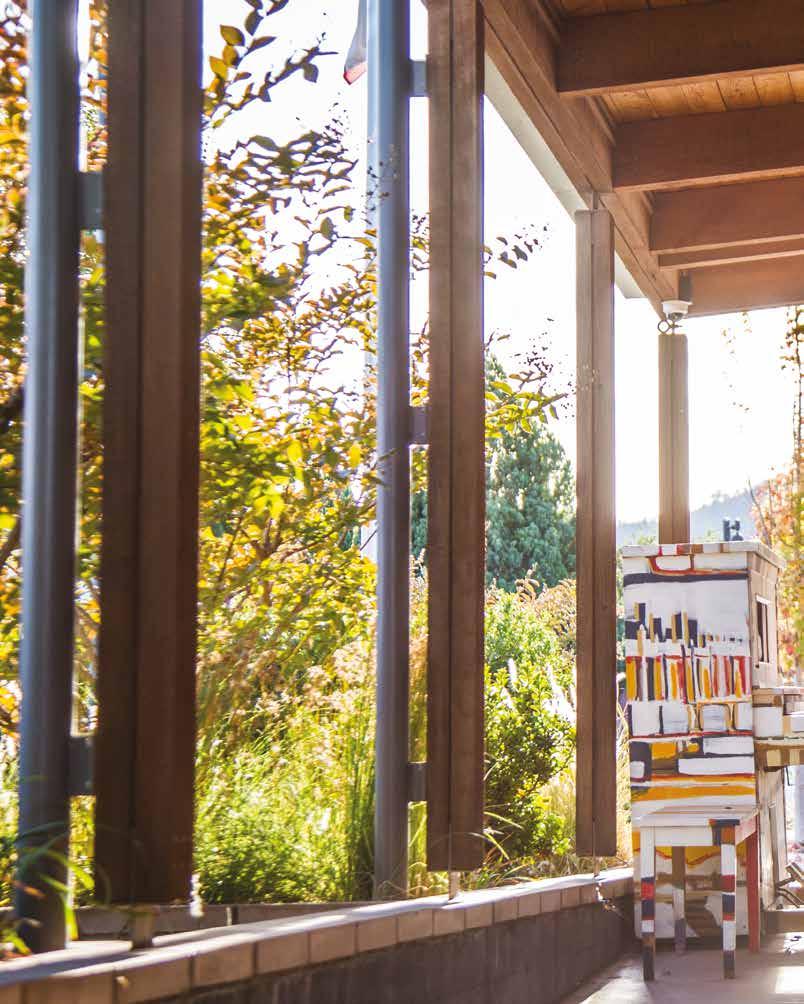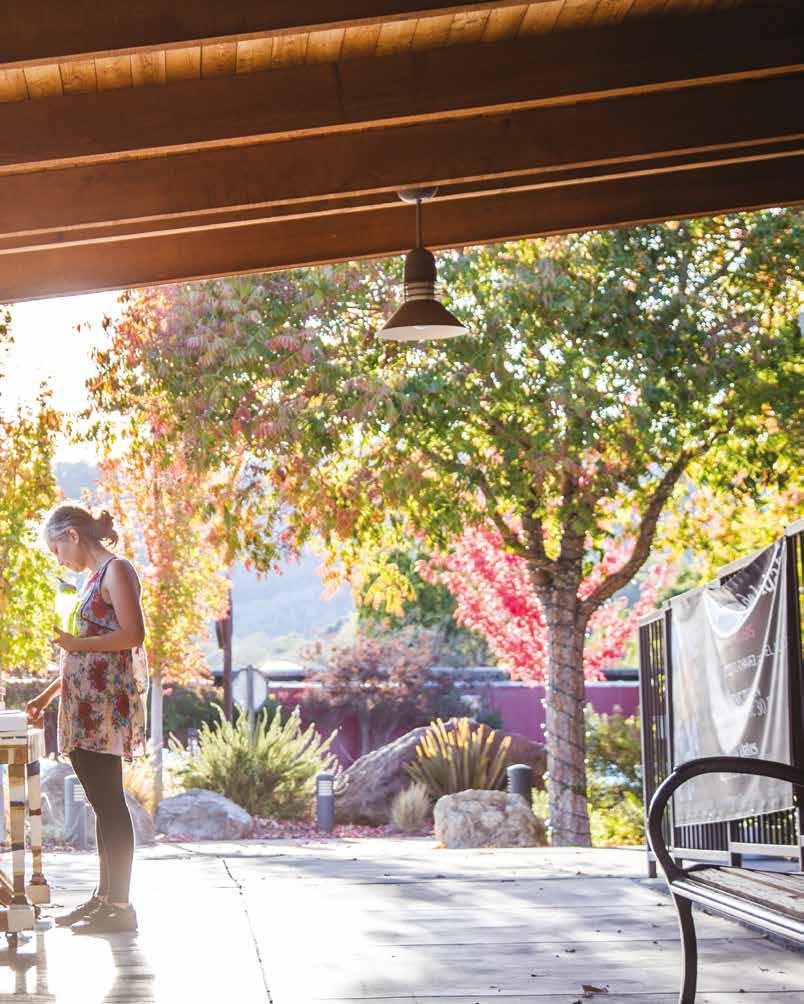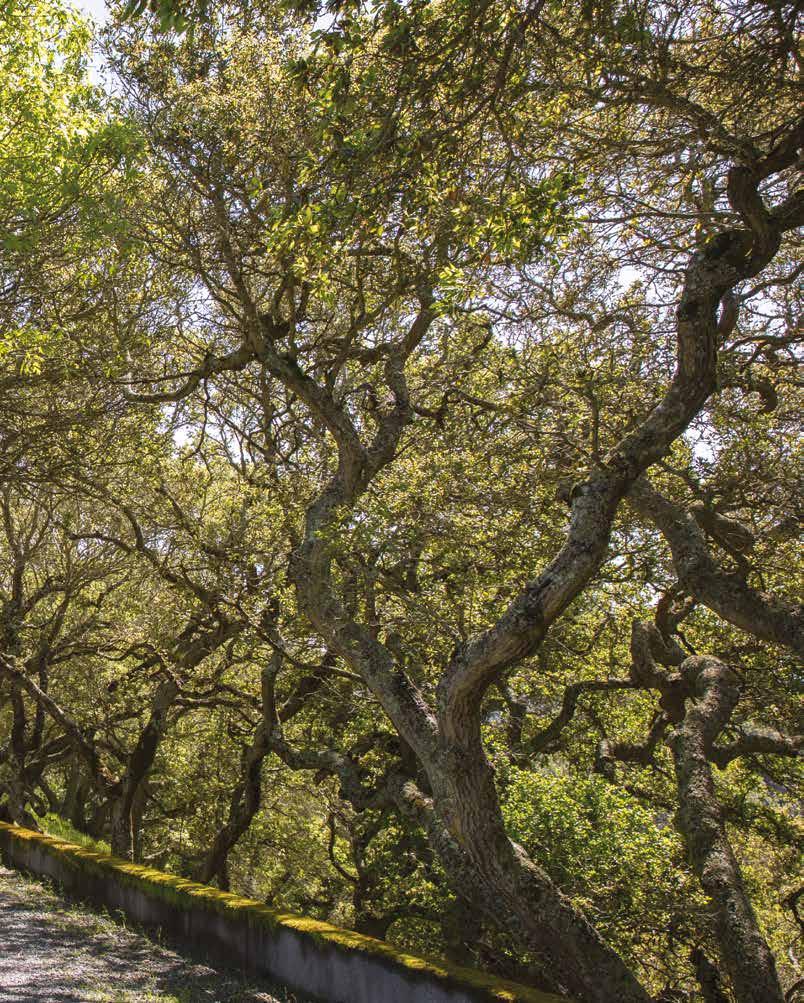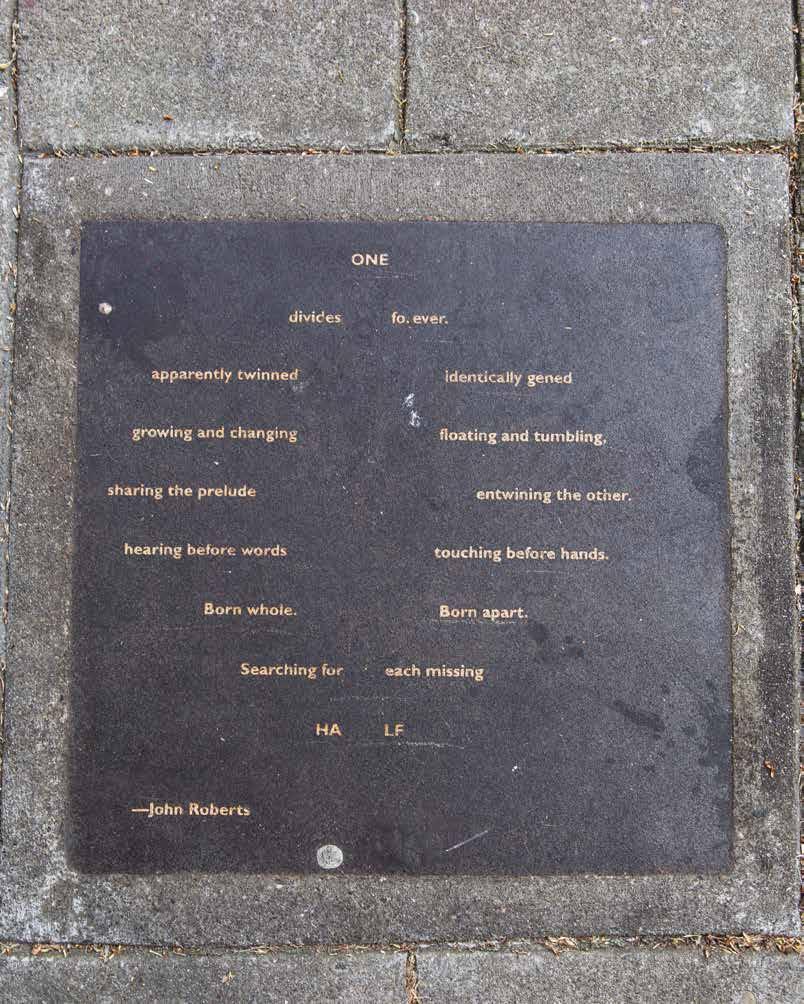
Fine-scale details in sacred places evoke sensual responses while reflecting community values, cultural heritage, fine craftsmanship, and shared experience capable of nourishing generations to come.
ORO Editions
Publishers of Architecture, Art, and Design
Gordon Goff: Publisher
www.oroeditions.com info@oroeditions.com
Published by ORO Editions
Copyright © 2023 John N. Roberts.
All rights reserved. No part of this book may be reproduced, stored in a retrieval system, or transmitted in any form or by any means, including electronic, mechanical, photocopying of microfilming, recording, or otherwise (except that copying permitted by Sections 107 and 108 of the US Copyright Law and except by reviewers for the public press) without written permission from the publisher.
You must not circulate this book in any other binding or cover and you must impose this same condition on any acquirer.
Editor: David Moffat
Author: John N. Roberts Book Design: Daniela Peña Corvillón and Camila Undurraga Puelma Project Manager: Jake Anderson
Cover: Accessible elevated boardwalk and gathering areas, Muir Woods National Monument, California. 2016, Hanh Nguyen.
End Papers:
Front: Library Terrace Garden, San Francisco Botanical Garden at Strybing Arboretum Edwin Hamilton, Stonemason & Sculptor. 2018, Jose Luis Aranda.
Rear: Restored lagoon at Muir Beach, Muir Beach, California. 2021, John Northmore Roberts & Associates.
10 9 8 7 6 5 4 3 2 1 First Edition
ISBN: 978-1-957183-33-6
Color Separations and Printing: ORO Group Inc. Printed in China
ORO Editions makes a continuous effort to minimize the overall carbon footprint of its publications. As part of this goal, ORO, in association with Global ReLeaf, arranges to plant trees to replace those used in the manufacturing of the paper produced for its books. Global ReLeaf is an international campaign run by American Forests, one of the world’s oldest nonprofit conservation organizations. Global ReLeaf is American Forests’ education and action program that helps individuals, organizations, agencies, and corporations improve the local and global environment by planting and caring for trees.

To my grandchildren: Maya, Seneca, Jack, and Ronan
I have some stories I would like to tell you about places that I helped to create, both ordinary and extra-ordinary, and how they came to be what they are today. In reading them, I hope that you will learn something about placemaking, the work that I have done for many years, and in the process gain some insight into one small part of your family heritage. You may want to visit these places someday, and if you do, you’ll have a perspective on why they are as they are and how this reflects the communities they were intended to serve. That may trigger questions about how other places, more familiar to you, have been made and empower you to think about how you can affect changes in your own environments. I would like that. First, some comments about placemaking. It’s easy to think that a place has always been the way it is, especially the first time you see it if you have not been there before. But places are not static. They are always changing, both naturally over time and rapidly as environments are created. Rivers change course; mountains erode; sand dunes shift; birds build nests; worms cultivate soil; dogs dig holes; and people build buildings and roads and cities. Each subtle and dramatic action has a direct effect. One of life’s great pleasures for me has been to puzzle through the hidden forces of change that have molded the places I encounter. I have learned to follow the water, and when I do, the stories flow.
Your houses with their gardens were conceived and built as creative acts. And so were the streets where you live, the city where once was farmland, the farms where once was natural countryside, and the parks that preserve a bit of wild nature. Much of what we experience as part of our everyday lives has been affected by processes set in motion by someone long ago. It was a revelation to me to realize the extent to which our built environment has been designed. It was also revealing to understand that the world we have designed mostly reflects our narrow human frame of reference, not that of other living things, like salmon or trees. I came to see that it was well within my own power to choose to accept the conditions as they are, or to change them. And if changes were within my power, what voices would I listen to as my guide?
Not everyone thinks about what it takes to make a place, or why some places are distinctive and others uncomfortable, or why some serve people and wildlife while others do not. People respond to places intuitively. They may not be conscious of why they react to a space the way that they do. I hope this collection of essays will raise your awareness of the places you visit. If, and when, you do think about such things, rich stories will emerge with insights about people, nature, how our surroundings have been altered, and the nature of the forces behind the changes.
Placemaking is stimulating, rewarding, creative, and meaningful work to which I committed myself as a young man and continued to pursue for the following fifty years (and counting) as both a professional practitioner and college educator. I would hope that this work captures your imagination as it does mine but understand if it doesn’t. At the very least, I hope the joy that I have found comes through in these stories, and that the stories prompt you to think about the places you inhabit in a different light than before.
Left page: Elevated boardwalk at Muir Woods National Monument, Mill Valley, CA, 2021. JNRA.
Papa JohnT he writing of this book began as a love letter to my four grandchildren. Memories of shared experiences with them in parks and gardens, on trails, and in city landscapes fill my heart. Sense memories of places — smells, sounds, color, texture, space, wind — can be carried for a lifetime. I can see that such seeds have taken root with those youngsters. They have a joyous attraction to places where nature is celebrated. I was inspired to write to my gra ndchildren to provide context for this legacy. I wanted to introduce them to the idea of placemaking in our physical environments — to give them insight into the creative processes that have formed the spaces we inhabit. In so doing, I hoped to reveal the power within themselves to influence how places can be conceived. And not just physical places. If we imagine the enlightened transformation of our environment there is no limit to what we can achieve as individuals and communities.
While writing these stories, I realized that I was describing an approach to creative design that was in its infancy when I was in school fifty years ago and has only recently gained general recognition in the design literature. But community-based design from an ecological perspective has now taken hold and has become an important contributor to a new balance being created between the built and natural environments. It seemed that fellow professionals and ordinary citizens alike would benefit if stories like these, of the transformation of real places, were part of the public discourse. Placemaking is not a mystical, mysterious activity. It is the result of intentional acts by informed people. And with creative collaboration, magical things can happen.
And so I wrote these stories with family and friends in mind as well as fellow placemakers, students, and ordinary people who might find them interesting and useful as they transform their own environments.
The twenty-five stories included here describe changes to the physical environment in the public realm. These are not private enclaves, but spaces available to all as part of our public trust. I have organized the stories geographically by county in the San Francisco Bay Area and included a few from more remote Northern California locations. They represent my work over the past fifty-plus years in the form of neighborhood, regional, and national parks; community centers; greenways; downtown centers; neighborhoods; city streets; public gardens; wildlands; and publicly accessible commercial areas. Many projects include extensive ecological restoration. All have an ecological basis to their design. Some include historic and cultural resources. Others integrate public art. All are a product of community participation in the design process and reflect the values of the people who use and manage them. Many reflect a correction of past environmental or social assaults. And all aspire to redefine our culture’s socio-ecologic relationship with the places in which we live. Taken together, they provide a window into the revolutionary environmental, social, and cultural forces that have affected our physical environment over the past fifty years.
The stories presented here also show how issues addressed in one location may inform how similar issues are addressed elsewhere. And the range of examples reveals that common ground can be found while creatively reconciling critical issues, even in the most unlikely of circumstances. Above all, the art of the possible requires building upon areas of agreement while weaving commonalities into a fabric that may hold diversity and inspiration and aspiration.
TABLE OF CONTENTS
PREFACE: PLACE, THE COMMONS, AND OUR SHARED LIFE IN NATURE BEGINNINGS
PLACES (Map)
San Francisco
SWORDS TO PLOWSHARES | Fort Mason
PEACE PARK | Crissy Field
JUANA BRIONES’S PLACE OF HEALING | El Polin Spring
PAST AND PRESENT | Presidio Officer's Club
THE REVOLUTION’S EXTRAORDINARY ORDINARINESS | Boeddeker Park
THE STONEMASON’S SIGNATURE | Library Terrace Garden, Strybing Arboretum
Marin County
COHO RE-WILDING | Muir Beach
INTERWOVEN IN THE FOREST FLOOR | Muir Woods
South Bay Counties
PRIDE OF PLACE | Poco Way, San Jose
JUST THE PLACE FOR AN ICE CREAM SOCIAL | Mercy Bush Park, Mountain View LIVING WITH DEATH | Colma Community Center Napa / Sonoma Counties
RE DISCOVERING THE ORIGINS OF A RIVER TOWN | Petaluma River
INTO SNOOPY’S HEAD | Charles M. Schulz Museum
IDENTITY OF A SMALL TOWN | Yountville Town Center
WINE AND FRIENDSHIP | Stag's Leap Wine Cellars
Berkeley
HOMETOWN COMMUNITY-BUILDING
ARTS AS CATALYST | Addison Street Arts District
GARDENS IN THE CENTER OF THE CITY | Berkeley Central Library/Library Gardens STREET THEATER | 4th Street Paseo
ALMOST CLEAN AND GREEN | North Waterfront Park
Yosemite National Park, Mariposa County
YOSEMITE VALLEY
THE HEART OF A PARK | Yosemite Village Day Use Area
MANAGING THE HORDES | Yosemite Lodge
ACCESS TO WILDLANDS | Bridalveil Fall
Redwood National and State Parks, Humboldt County
GATEWAY | Redwood National and State Parks Visitor Center
CODA
ACKNOWLEDGMENTS ABOUT THE AUTHOR

PREFACE: PLACE, THE COMMONS, AND OUR SHARED LIFE IN NATURE
This book is about placemaking, and specifically places in the landscape commons. The places described are not “new,” but instead represent adaptations of existing conditions to new sets of circumstances. All have been manipulated in some manner in the past, even those traditionally considered to be “wilderness” — a social construct that artificially separates humans from nature. But in each case a creative process of design has enabled a new identity of place to emerge based on inclusiveness, stewardship in lieu of ownership, and a layering of past and present, nature and the built environment.
These stories reflect the range of considerations that influence ecologically and community-based environmental design. Each place is individual and unique, providing responses tailored to the specific circumstances of its site. But the approach to design is common throughout all this work, and instructive. It begins with a set of broad questions that probe the central issues of placemaking in the commons. What do we mean by “place”? How do places sustain healthy connections among people and between humans and the natural world? Who is invited to participate in the place? And why focus on the commons? These questions are essential for anyone thinking about making alterations to the physical environment, because the effort to answer them provides key insights into the inherent nature of a place. The sense of place permeates our lives personally and communally, and its expression is the core aspiration of spatial design. Gaining a clear understanding of the nuanced identity of place is the essential first step in placemaking. It will inform all subsequent choices that are made.
“Place” generally refers to a location with a distinct identity. Places help us to orient in space and time. We organize our daily activities around them. They contain the stuff of our everyday lives and are part of the definition of who we are as individuals, communities, and cultures. We can feel safe within them or fearful because of them. A place can reflect a state of mind. You might say that you are in a “good place” or a “bad place” depending upon how you are feeling on any given day. Imagined places like heaven or the underworld provide a familiar grounded cultural frame of reference for explaining things that are not otherwise easily understood. An object caressed, the fragrance of the first rain, the sound of a train, the taste of a fresh peach, or the sight of a long-lost friend can transport a person instantaneously to a place deeply embedded within their sense-memories. Sitting on a bench enjoying a spectacular view is an experience of “place,” as is cheering in unison with the crowd at the crack of a bat, wading in the surf at a sunny beach, or sharing a meal with a special friend. In each case, the idea of “place” carries a spatial connotation with physical, sensual, emotional, and cultural implications. It is essential that the multifaceted sense of place be recognized by the designer and inform whatever transformation is conceived.
For me, places are primarily defined by their natural setting. Humans and the places we create are a part of nature, not separate from it. The identity of our places is thus inextricably
Left page: Accessible pathways through the gardens at Green Gulch Farm/San Francisco Zen Center connect Cloud Hall with all other buildings. 2016. Hanh Nguyen.
linked to the ecology of a site. And the integration of nature with the built environment is a central consideration for placemaking in the commons. A protected bay, a fertile river valley, a waterfall on a granite face, or towering trees may give iconic identity to a specific place. But in each case, the underlying ecological systems and natural processes that sustain the life of a place are what create the conditions for such iconic features to reveal themselves, and are what interest me.
From long experience I have found that water is the key to unlocking the secrets of such underlying natural systems. Nature and the built environment are in a continuous dynamic balance with each other, adjusting as conditions change. Water is at the heart of it, and its treatment is the seminal consideration for the design of most of the places in this book. By following the water we can discover how to sustain the balance. Of course, in the end, nature will prevail. Entire civilizations have collapsed by neglecting the underlying ecological support systems for their built environments and it is often the water systems that fail. It is imperative for our survival and for the health of the planet that the places we construct nurture the long-term sustained ecological health of their settings, and water is the key.
Sacred spaces reveal the cultural heritage resulting from human use of a place. Places where special events have happened, places associated with important historic figures, or places where distinctive natural phenomena occur are often named in many cultures. The act of naming itself can provide insight into the cultural values of the inhabitants and the special relationship they have with the land. But spaces that are important to a community are not always named. Those places and their importance may only be revealed by probing, discussion, research, and observation. Societies and their special places change over time, but we can learn much by recognizing the sacred spaces of those who have lived in a place before us, understanding why and how they were made, and using that knowledge to respectfully inform new changes we make to build upon that heritage. Each of the stories of this book traces the influence of cultural heritage on the design of new places created in this manner.
The places described in this book are all in the public realm. They are thus places to be used and maintained by communities of people for common enjoyment. These are also places of inclusion where community bonds are nurtured, where community life is celebrated. And their composition has been derived from inclusive, participatory processes intended to give voice to anyone who wants to engage in the creative work of placemaking or enjoy the fruits of such collaborations. The participants and users of these places are their stewards, not their owners; they must therefore consider their value today and for future generations as a long-term part of the public trust, not as a resource for immediate gain. Meaningful, enduring placemaking depends upon the public and future generations having a voice in what places will become, allowing their voices to be found in the places created.
The stories in this book are about reshaping the physical environment of the commons — the shared spaces, resources, and natural systems that structure the daily lives of all living beings. Each focuses on a specific landscape that has been changed intentionally in response
to its own set of circumstances as well as relationships with nature at large. No place exists in isolation; nor is an individual place the domain of a single entity. Natural systems like water, air, weather, fire, and wildlife corridors do not adhere to property boundaries. Actions in one place have a direct influence on the natural systems and human uses in others. Such interconnections can either nurture or contaminate depending on choices made along the way. As presented in many of these stories, corrections to past assaults in one place, no matter how small, can have a cascading positive effect. The more these interdependencies are acknowledged, the greater the benefit. It is the place-maker’s job to discover the role that each place plays both in its immediate environment and as part of this interconnected whole. The places in the landscape described here have been created for public benefit, conceived to enrich life among people and to nurture connections between humans and the natural world. As I look back over them, I can see a new set of cultural values emerging as we rediscover ancient wisdom about our relationship with the earth and the importance of community. These values are becoming increasingly apparent in our attention to the commons and to the design of public spaces. Such a shift in paradigm has been occurring both subtly and dramatically over the past half century, and our common future depends upon the extent to which we continue to recognize and nurture it.

BEGINNINGS
Let me begin by telling the story of how and why I started to do this work. I have always loved the out-of-doors, and spent much of my young life, no matter the weather, playing or exploring outside. My mother, Mary Jane (Jeri) Schultz Roberts, was an avid gardener and supporter of the arts with a keen interest in the beauty that a garden brought to her life. Her influence on me was immeasurable. As boys, my twin brother, Bill Roberts, and I also spent two summers in the central Canadian wilderness of the Quetico Superior National Park — an experience that was particularly important in forming my deep appreciation for places with vibrant natural ecological systems. While there were many other influences on me growing up, the visceral, tactile, and sensual lessons of my mother’s gardens and living in that Canadian wildland of lakes and forests, canoes and portages, wild blueberries, loons and fish and beaver and deer have informed all of my work ever since. I also worked on construction crews throughout my teenage years building houses and gardens, developing practical tools of the construction craft, and learning to appreciate what it takes to build something, and build it well. One incident in my young adulthood gave me clear insight into the potential healing power of a garden, with profound effect on all my work. Before Jody and I
Left page: Creekside patio and entry garden at Roberts’s residence, Berkeley, CA, 2021. JNRA.
were married, we were both living in New York City pursuing our dreams of becoming professional dancers. Jody’s young mother was near the end of a terrible struggle with cancer, and Jody was having a very difficult time dealing with the inevitable loss. One day was particularly hard for her. She was feeling sick, full of despair, and agitated. Our world in New York was mostly lived indoors — in dance studios, theaters, apartments — and on busy city streets having little to no contact with nature. Despite her objections, I got her to leave her apartment on that day and join me for a trip to The Cloisters at the far northern end of Manhattan Island overlooking the Hudson River. The Cloisters is a museum of medieval art built in the form of a monastery with gardens. Jody knew nothing about the place and rarely, if ever, considered gardens or nature as part of her world. Unsuspectingly, the moment she entered, she was stunned by the beauty of the garden spaces, the subtle composition of building and nature, the quiet contained views, and long vistas from the heights of the river landscape. A deep calm entered her body, visibly draining it of all tension. We stayed there for hours absorbing the space, the fragrances, the vistas, the birdsong, and the greenery. The power of that sensual experience transformed her, initiating a healing process from deep within and allowing her to return with joy to her city life, and to strengthen the bond with my life. I knew the importance of nature for myself and thought intuitively that it might help Jody. But I was not prepared for the profound effect I saw that garden have on her. It has lasted a lifetime.
By the time I reached college age, I was becoming aware that the natural environment that had been such an important part of my upbringing was under assault. I read in the newspapers that the Cuyahoga River, a large river that runs through Cleveland, Ohio, was so full of chemical pollutants from industrial dumping that the river itself caught on fire and burned for days. Water is the lifeblood of all living things, but nothing could survive in that river. And the Cuyahoga was not unique. The drinking water for millions of people throughout the world was then being contaminated by a toxic mix of pollutants, causing widespread disease, malformed babies, and death. Birds that normally would appear on their springtime migrations were also disappearing, poisoned by DDT, a pesticide that was sprayed on crops and in residential neighborhoods to kill plant-eating bugs, mosquitos, and other insects. For several years my father sprayed the foul substance routinely over our suburban Chicago yard, much to the dismay of neighbors. But the birds and other animals that ate the bugs were likewise dying, as were the animals that preyed on them. Fortunately, Rachel Carson’s book Silent Spring exposed the horrors of DDT and spawned an international movement to ban the poison. It changed my father’s views on the substance as well.
As a teenager, I didn’t understand the science or engineering of what was going on, but I could see that nature was being stressed to the breaking point. Society in general was awakening to the extent of environmental degradation that had been wrought by our culture, and people were beginning to see how it threatened the underlying life-support
systems of the planet. The movement for an ecologically based approach to living on this earth made sense to me. Awakened, I wanted to be part of it. Worldwide environmental destruction was just one aspect of the complex humancaused turmoil of the times that would soon influence my life and views of the world more directly. Our country was then engaged in a senseless, ideologically driven military conflict in Southeast Asia, justified by officially sanctioned government lies. The Vietnam War, as we called it, was ravaging the countries in which it was being fought, causing the death of more than a million Vietnamese and hundreds of thousands more in neighboring Cambodia and Laos. The U.S. lost tens of thousands of people my age in the war, and my age made me a prime candidate for military service. The war was ripping apart families (including mine), destabilizing former trusted institutions, and causing riots and destruction in cities across this country. The unwanted prospect of being drafted into the U.S. Army forced me to abandon a budding interest in professional dance/theater. To avoid active service, I joined the Army Reserves instead. I then stumbled awkwardly through a series of jobs in what I came to regard as unfulfilling careers, including international banking, while beginning to raise a family. Our lives had been profoundly disrupted by the war. But the disruption provided me an opportunity to explore different avenues in a search for meaningful work. And eventually I began to clarify my own values, set my own goals, and better understand the course I would like to chart in the world. I wanted to participate in the repair of the society that was being torn apart by war, injustice, and greed — to develop my skills and interests in the interest of meaningful transformation, not just the perpetuation of past ways of doing things. What model could I use to focus my energies? My father, William E. Roberts, had been a corporate leader integral to rebuilding the U.S. economy following the Great Depression of the 1930s. Through his work he helped defeat the heinous Nazi regime in Germany in World War II, and he participated in the unprecedented U.S. economic resurgence in the postwar era of the 1950s and 60s. He had begun his career as a publicspirited executive for a Fortune 500 company that made cameras, projectors, lenses, and other filmmaking equipment used in the war effort and the film industry. He subsequently became the CEO of another Fortune 500 company that made video equipment and magnetic tape
as
One incident in my young adulthood
gave me clear insight into the potential healing power of a garden, with profound effect on all of my work.


SWORDS TO PLOWSHARES
Fort Mason and the Fort Mason Community Garden
PEACE PARK Crissy Field JUANA BRIONES'S PLACE OF HEALING El Polin Spring (Presidio of San Francisco)
PAST AND PRESENT Presidio Officers’ Club
THE REVOLUTION’S EXTRAORDINARY ORDINARINESS Boeddeker Park
THE STONEMASON’S SIGNATURE
Library Terrace Garden (San Francisco Botanical Garden at Strybing Arboretum)

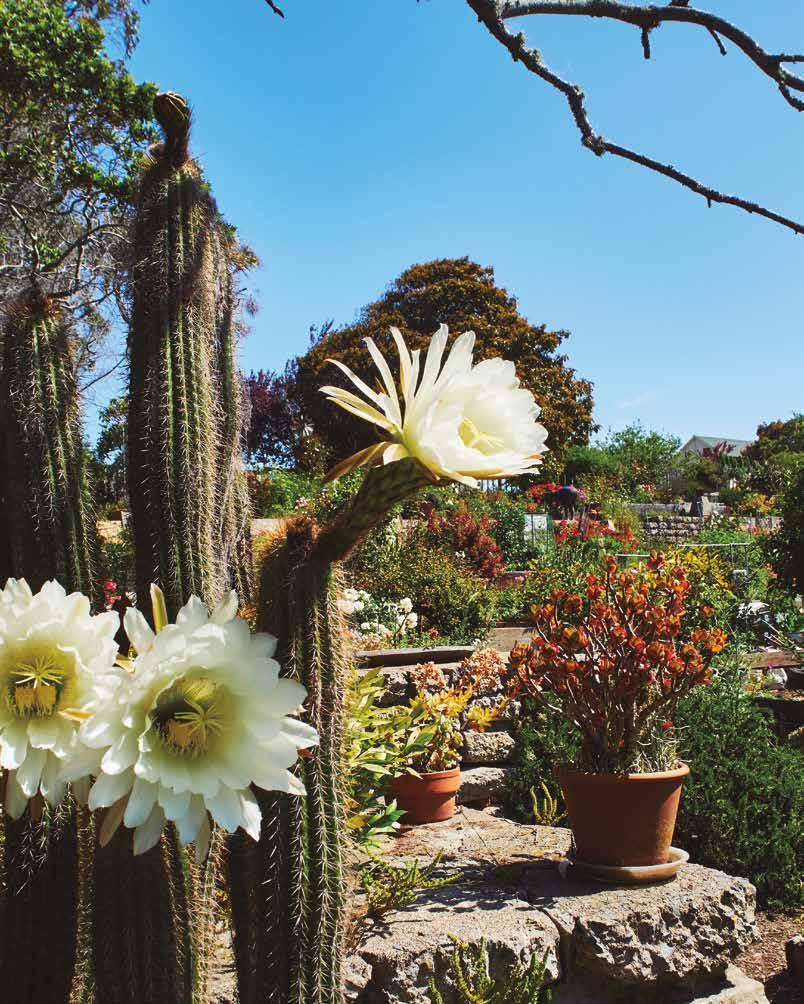
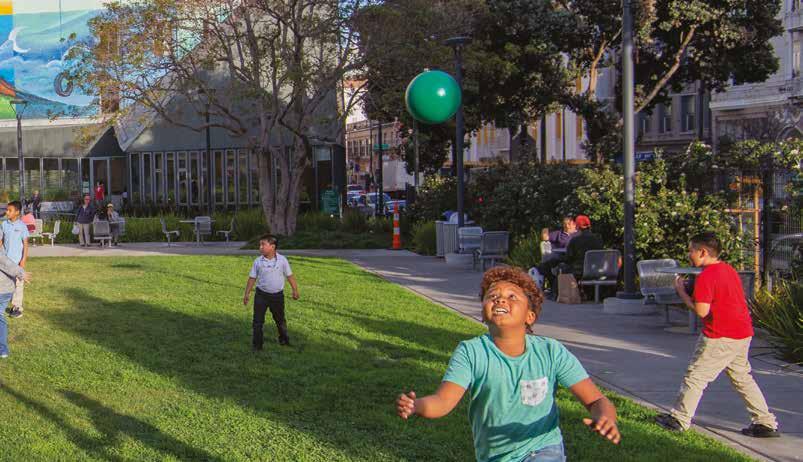



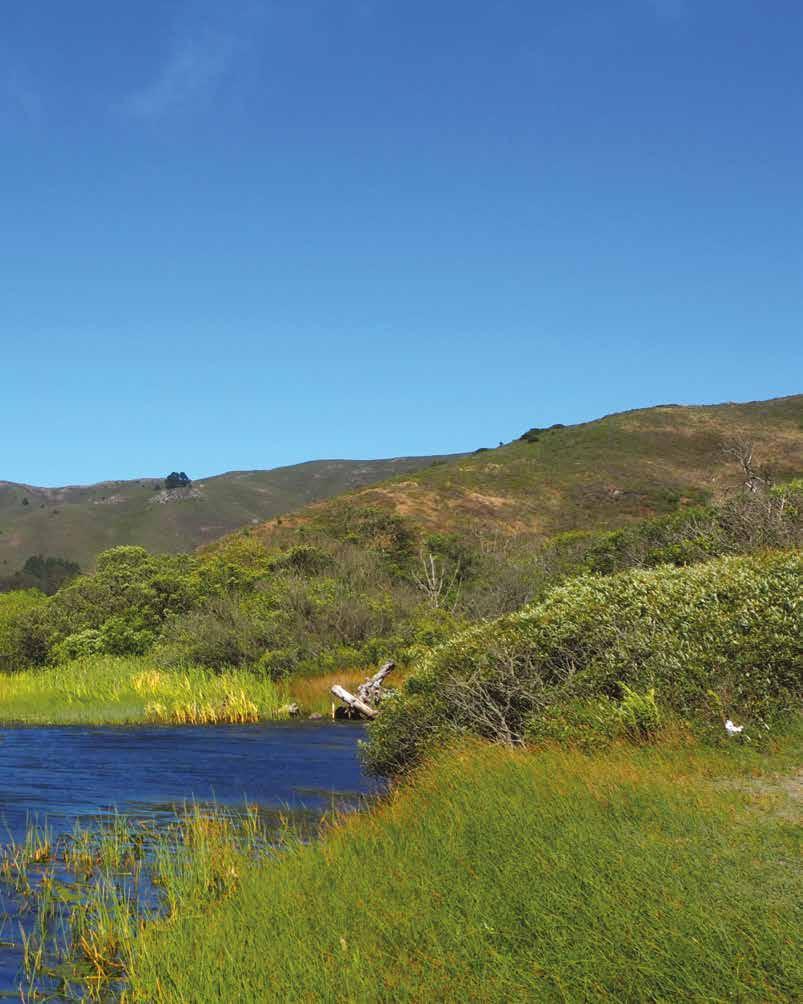

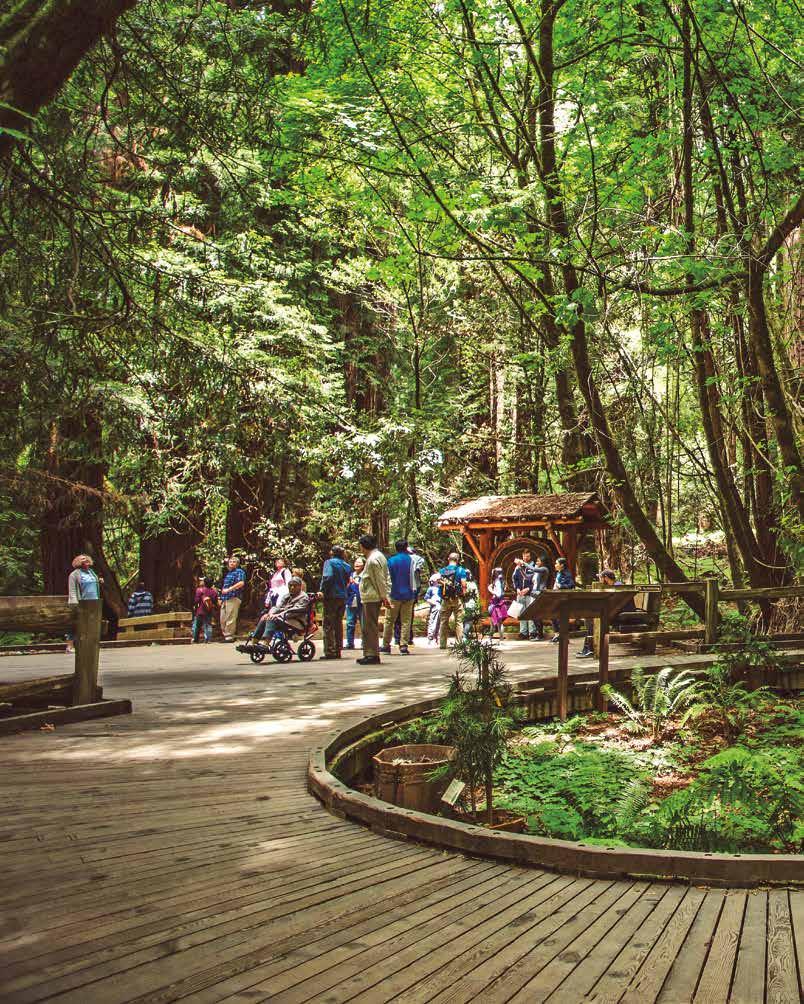


 Oaks behind Riparian Trees in Parking Lot
Property Line
Parking Lot
Bioswale & P.A.
Geothermal Field Wells Serving Heating & Cooling
Ivy Court Neighbors
Oaks behind Riparian Trees in Parking Lot
Property Line
Parking Lot
Bioswale & P.A.
Geothermal Field Wells Serving Heating & Cooling
Ivy Court Neighbors
